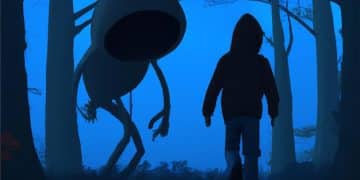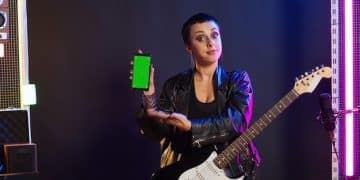Dark Aesthetics in US Music Videos & Album Art: A Visual Revolution
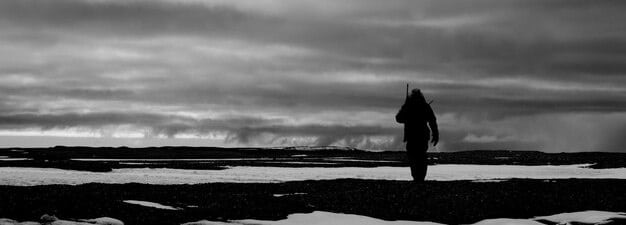
The exploration of dark aesthetics in US music videos and album art reveals a profound shift in visual storytelling, reflecting socio-cultural anxieties and creating a deeper, more immersive connection with audiences through evocative, somber imagery and thematic depth that transcends traditional pop sensibilities.
The visual landscape of American music is in constant flux, mirroring shifts in cultural sentiment and artistic expression. Today, a powerful and undeniable trend is reshaping how we consume music: The Power of Visuals: How Dark Aesthetics are Shaping US Music Videos and Album Art. This stylistic evolution moves beyond mere trend, delving into complex narratives and evoking deeper emotions.
the evolving canvas: from vibrant to veiled narratives
For decades, US music visuals often leaned towards bright, celebratory, or overtly glamorous presentations. Think of pop anthems of the 80s or the vibrant, often chaotic energy of early MTV. However, a significant shift has occurred, moving towards a more nuanced, often somber, and deeply atmospheric visual language. This evolution isn’t random; it reflects broader societal introspection and an artistic desire to explore themes beyond surface-level euphoria.
The transition from a purely overt visual narrative to one veiled in shadow and ambiguity suggests a maturation of artistic expression within the popular music landscape. Artists and directors are increasingly understanding the power of suggestion, allowing viewers to project their own interpretations onto the darker, more abstract imagery. This creates a richer, more interactive experience for the audience, inviting them into a deeper psychological space rather than spoon-feeding them an explicit story. It’s about evoking feeling, not just depicting action.
the genesis of a mood
Where did this predilection for the dark begin? Its roots are multifaceted. From the brooding romanticism of gothic literature to the stark realism of independent cinema, various artistic movements have always flirted with the shadows. In music, this has manifested from rock’s early rebellious imagery to the introspective grunge of the 90s. Yet, the current wave feels different, more pervasive, and intentionally integrated across genres previously untouched by such tones.
- historical artistic influences: tracing lines from film noir, expressionist art, and even classical painting’s use of chiaroscuro.
- socio-cultural reflections: how concerns like climate change, political unrest, and mental health awareness manifest visually.
- technological advancements: the sophistication of digital effects allowing for intricate, layered dark visuals that were once impossible.
This deliberate embrace of darkened aesthetics is a testament to artists’ willingness to push boundaries and challenge traditional expectations of what music videos and album art “should” look like. It’s a rejection of the purely commercialized, brightly packaged image in favor of something more raw, authentic, and emotionally resonant. This shift appeals to a public increasingly wary of superficiality and seeking deeper meaning in their cultural consumption.
beyond black and white: the palette of shadows
Dark aesthetics are far more than just a lack of color. They encompass a rich spectrum of visual techniques designed to evoke specific moods and narratives. This includes the strategic use of low-key lighting, desaturated color palettes, stark contrasts, and often gritty, textural elements. It’s about creating depth and atmosphere, where every shadow tells a part of the story, and every muted hue carries emotional weight.
Directors and musicians meticulously craft these visual worlds, understanding that the absence of overt brightness can amplify intensity. A stark monochrome video can feel more urgent than a vibrant one, and a dimly lit scene can convey more intimacy or dread than a brightly lit one. This deliberate choice of palette is not merely aesthetic; it’s a narrative tool, signaling to the viewer that something profound, perhaps unsettling, or deeply personal, is about to unfold.
mastering atmosphere through visual cues
The mastery of dark aesthetics involves a sophisticated understanding of visual psychology. It’s about more than just turning down the lights; it’s about controlling the viewer’s gaze, highlighting specific elements, and creating a sense of tension or introspection. This often involves careful framing, slow-motion sequences, and an emphasis on minute details that might otherwise be overlooked in a brighter, busier visual.
- strategic lighting: utilizing chiaroscuro, silhouettes, and single-source lighting to create dramatic effect.
- color theory in darkness: employing desaturated tones, cool blues, deep purples, and muted grays to convey melancholy, mystery, or intensity.
- textural elements: incorporating gritty textures, distressed surfaces, and raw, unfiltered imagery to enhance realism and rawness.
The careful curation of these elements ensures that the dark aesthetic serves the song’s narrative, rather than overshadowing it. It creates a symbiotic relationship where the visuals enhance the audio, and vice versa. This nuanced approach differentiates genuine artistic expression from a superficial adoption of the trend, demonstrating a deep understanding of visual storytelling and its power to connect with audiences.
the psychological resonance: why darkness captivates
The human psyche is complex, drawn to both light and shadow, comfort and discomfort. Dark aesthetics tap into a primal fascination with the unknown, the mysterious, and often, the uncomfortable truths of existence. This visual style allows artists to explore themes that might be too raw or confronting in a brighter, more conventional setting—themes such as grief, isolation, vulnerability, and systemic injustice. By doing so, they create a space for viewers to engage with these difficult emotions in a safe, artistic context.
There’s a subtle intimacy in darkness, a feeling of being privy to something private or forbidden. This can make the viewer feel more deeply connected to the artist’s message, as if sharing a secret or witnessing an unvarnished truth. This psychological resonance explains why audiences are not merely tolerating but actively seeking out and appreciating these darker visual narratives, finding them more authentic and relatable in a world often saturated with curated perfection.
the allure of the unsettling
The appeal of the unsettling lies in its ability to challenge our perceptions and stimulate our minds in ways that conventional beauty might not. Dark visuals often present distorted realities or evoke a sense of unease, mirroring the complexities and anxieties of contemporary life. This can be cathartic, allowing viewers to process their own feelings of uncertainty or disillusionment through the artist’s expression.
- exploration of taboos: addressing subjects often avoided in mainstream media, such as mental health struggles, existential despair, or social decay.
- invoking introspection: prompting viewers to reflect on deeper questions about life, identity, and societal structures.
- emotional depth: creating a powerful emotional impact that lingers long after the visual has ended, fostering a memorable experience.
This engagement with the unsettling is not about promoting despair but rather about acknowledging the full spectrum of human experience. It’s a recognition that authenticity often resides in the shadows, and that vulnerability can be a source of profound strength. The resulting visual artworks are not merely entertaining; they are often deeply moving and thought-provoking, contributing to a richer cultural dialogue.
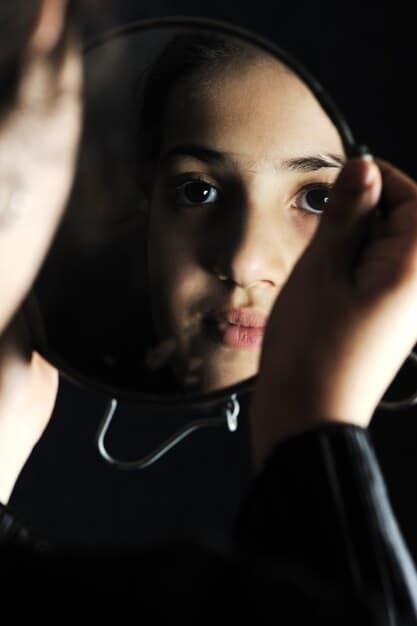
genre bending: dark aesthetics across the musical spectrum
Remarkably, the influence of dark aesthetics is not confined to traditionally “dark” genres like metal or gothic rock. Its tendrils have reached into hip-hop, R&B, pop, and even country music, blurring the lines between what was once considered visually appropriate for each genre. This cross-pollination indicates a broader acceptance and appreciation for visual storytelling that prioritizes mood and narrative over conventional genre-specific imagery.
Artists from diverse backgrounds are experimenting with these visuals, using them to subvert expectations or to add layers of complexity to their music. A pop artist might use dark visuals to convey a sense of vulnerability beneath a catchy melody, while a rapper might employ them to tell a story of struggle and resilience. This versatility proves that dark aesthetics are a powerful universal language, capable of conveying a multitude of messages across various musical styles.
case studies in creative risk-taking
Many prominent artists have spearheaded this visual revolution, taking creative risks that have reshaped the industry’s visual standards. Their willingness to deviate from established norms has opened doors for countless others, demonstrating that audiences are ready for more challenging and nuanced visual content. These artists have shown that authenticity, even if it’s dark, resonates deeply.
- billie eilish’s minimalist horror: how her videos use dark, claustrophobic spaces and unsettling imagery to amplify her introspective lyrics.
- the weeknd’s cinematic nightmares: his use of cinematic, often violent and surreal dark narratives to complement his R&B sound.
- fka twigs’ avant-garde somberness: her intricate, often disturbing choreography and visuals that push the boundaries of performance art.
These examples illustrate how dark aesthetics can be tailored to various artistic visions, producing results that are both unique and impactful. This adaptability is one of the key strengths of this visual trend, allowing it to remain fresh and relevant across a constantly evolving musical landscape.
the production evolution: crafting the shadowed world
The rise of dark aesthetics has necessitated significant advancements and creative approaches in music video and album art production. Directors, cinematographers, and designers are constantly innovating, pushing the boundaries of technology and artistry to realize these complex visual narratives. This involves sophisticated lighting techniques, intricate set design, advanced post-production editing, and a profound understanding of visual symbolism.
It’s no longer just about filming a performance; it’s about building an entire world, often one steeped in metaphor and psychological depth. This requires a strong collaborative effort, with artists, directors, and production teams working in synchronicity to ensure every frame contributes to the overall mood and message. The result is often a highly immersive experience, drawing viewers into a meticulously crafted visual universe.
techniques and tools
The toolkit for creating dark visuals is expanding rapidly, with new technologies and creative methodologies emerging constantly. From advanced camera sensors that perform exceptionally well in low light to sophisticated color grading software, the technical capabilities are aligning perfectly with the artistic vision. However, equally important are the conceptual tools—the understanding of composition, narrative flow, and emotional impact.
- low-key cinematography: techniques borrowed from film noir and arthouse cinema to create dramatic shadows and limited light sources.
- digital manipulation and effects: employing CGI, VFX, and compositing to create surreal landscapes, distorted figures, and otherworldly atmospheres.
- stylized art direction: focusing on specific color palettes, textures, and symbolic props to build a cohesive and impactful visual world.
The dedication to these intricate production processes highlights that dark aesthetics are not a shortcut to impact but rather a deliberate and often labor-intensive artistic choice. This investment in production quality underscores the seriousness with which artists and their teams approach the visual component of their music, recognizing its integral role in their overall artistic statement.
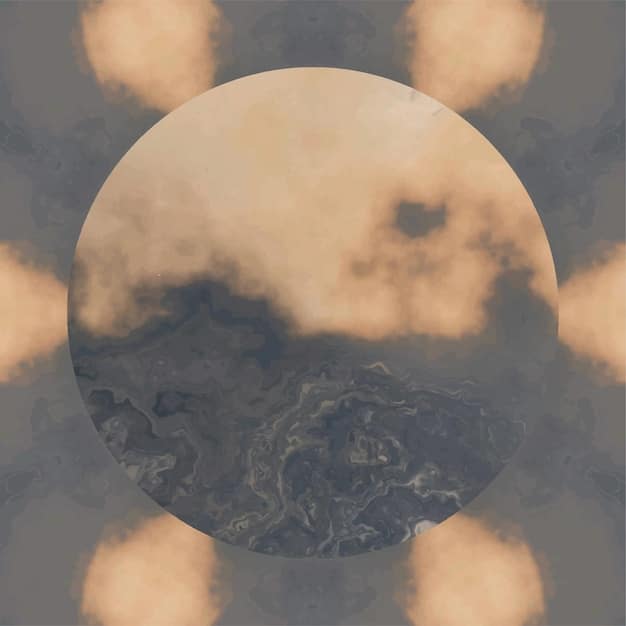
the future of visuals: sustained shadow or shifting light?
As with any prominent artistic trend, questions arise about its longevity. Will dark aesthetics continue to dominate the visual landscape of US music, or will new movements emerge to challenge its pervasive influence? While cycles of trends are inevitable, the current emphasis on authenticity, emotional depth, and nuanced storytelling suggests that the foundations of dark aesthetics are more than just fleeting. They tap into fundamental human experiences.
The current generation of artists and audiences is increasingly sophisticated, demanding content that resonates on a deeper level. This preference for substance over superficiality supports the continued relevance of visual styles that can convey complex messages. While specific manifestations of dark aesthetics might evolve, the underlying principles of mood, depth, and psychological exploration are likely to endure, shaping future visual narratives in profound ways.
innovations on the horizon
The future of music visuals will undoubtedly be shaped by technological advancements and evolving audience expectations. We might see further integration of immersive technologies, like augmented reality (AR) and virtual reality (VR), allowing artists to create truly interactive dark worlds. The continued push for authenticity could also lead to more raw, unpolished visuals, embracing imperfections as part of the artistic statement.
- interactive dark narratives: utilizing AR/VR to allow viewers to explore and participate within a dark, atmospheric visual space.
- hyper-realistic textures: pushing the boundaries of realism in visual effects to create even more visceral and impactful dark imagery.
- exploring new platforms: adapting dark aesthetics for emerging social media and streaming platforms, creating short-form, impactful visual content.
Ultimately, the power of dark aesthetics lies in its capacity to evoke powerful emotions and spark meaningful dialogue. As long as artists strive to connect with their audiences on a profound level and reflect the complexities of the human condition, visuals that delve into the shadows will likely remain a crucial and compelling aspect of American music culture. This isn’t just a trend; it’s a testament to the enduring power of visual storytelling in its most evocative form.
| Key Point | Brief Description |
|---|---|
| 🌌 Mood & Atmosphere | Dark aesthetics craft deep, evocative moods through specific lighting and color palettes. |
| 🧠 Psychological Resonance | They tap into human fascinations with mystery, introspection, and complex emotions. |
| 🎨 Genre Expansion | Once niche, dark visuals now influence hip-hop, pop, and R&B, broadening their appeal. |
| 🔮 Future Trends | Likely to endure, evolving with tech and sustained demand for authentic, deep narratives. |
frequently asked questions
Dark aesthetics are characterized by strategic use of low-key lighting, desaturated or muted color palettes, stark contrasts, and often gritty textures. They aim to create an atmospheric, mysterious, or somber mood, emphasizing depth and emotional resonance over overt brightness or literal interpretation.
Their popularity stems from a desire for deeper artistic expression and a reflection of complex socio-cultural anxieties. This visual style allows artists to explore themes like mental health, vulnerability, and introspection, resonating more authentically with audiences seeking nuanced narratives beyond traditional feel-good imagery.
While historically prominent in rock and gothic genres, dark aesthetics now permeate hip-hop, R&B, and pop. In hip-hop, they might convey urban grit; in pop, they might add emotional depth to a catchy track. The core principles remain but are adapted to fit each genre’s unique narrative and sound, blurring traditional visual boundaries.
Key techniques include advanced low-key cinematography, leveraging dramatic shadows and limited light sources. Digital manipulation, such as color grading for desaturation and visual effects for surreal elements, is also critical. Stylized art direction focusing on specific textures and symbolic props helps build cohesive, atmospheric worlds.
While specific trends evolve, the underlying principles of authenticity, emotional depth, and nuanced storytelling that dark aesthetics embody are likely to endure. As audiences continue to demand meaningful content, this visual approach will probably remain relevant, potentially integrating with new technologies like AR/VR to create more immersive experiences.
conclusion
The journey through the intricate world of dark aesthetics in US music videos and album art reveals a profound evolution in visual storytelling. Far from being a fleeting trend, this embrace of shadow, mystery, and introspection reflects a deeper artistic commitment to exploring the full spectrum of human emotion and societal complexities. By challenging conventional notions of beauty and brightness, artists are crafting immersive visual experiences that resonate powerfully with an audience hungry for authenticity and depth. As technology advances and narratives continue to evolve, the captivating allure of dark aesthetics is set to remain a defining element in the ever-changing landscape of American music, continually pushing boundaries and enriching our collective visual culture.
